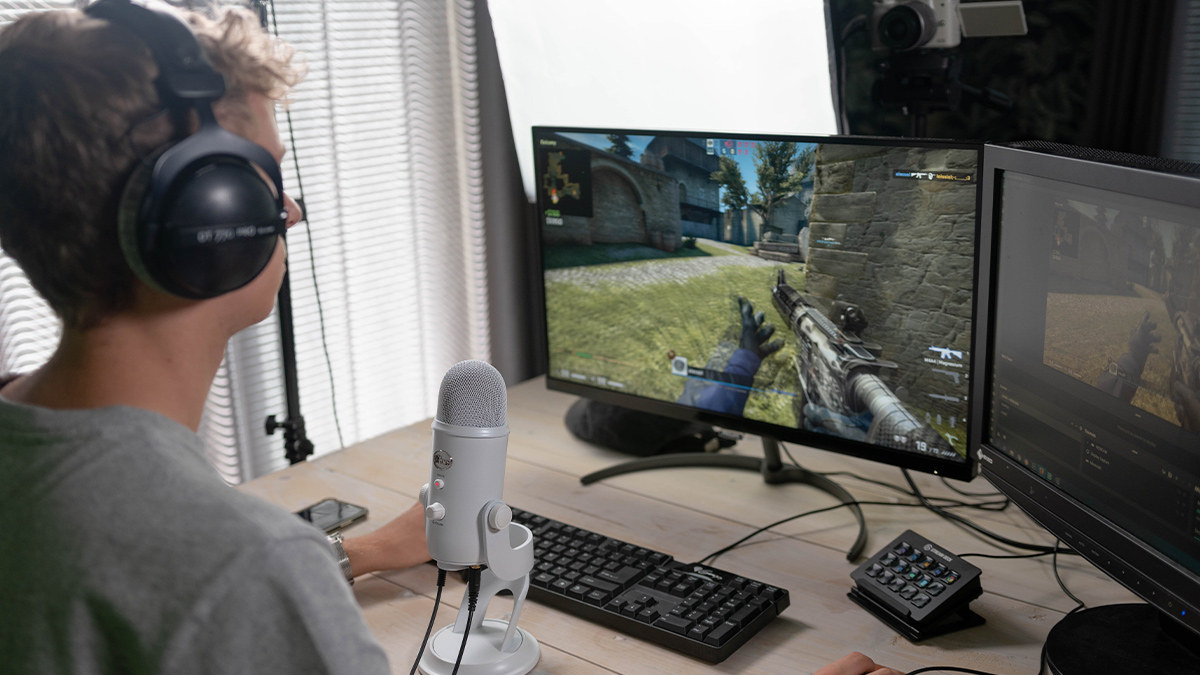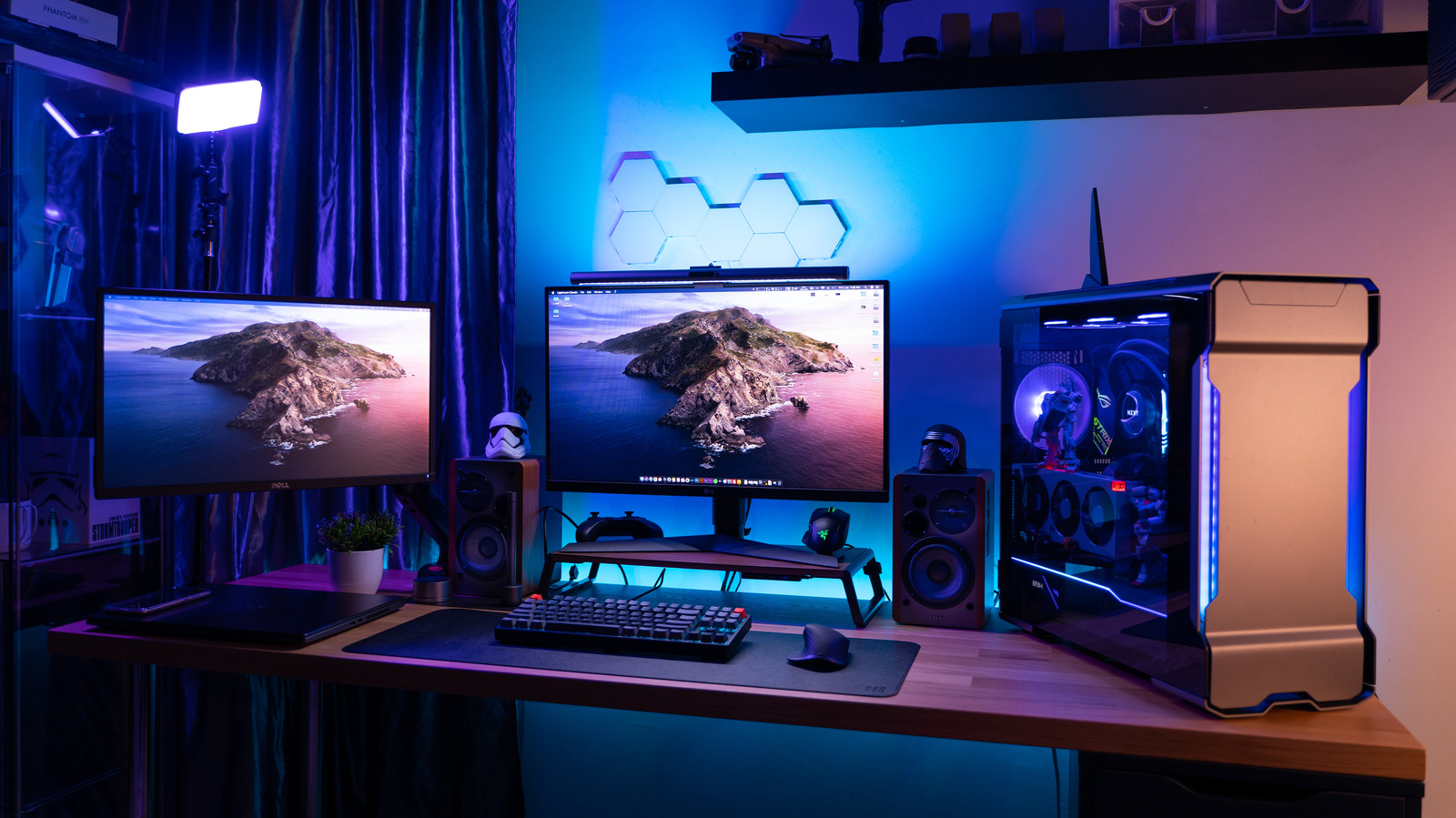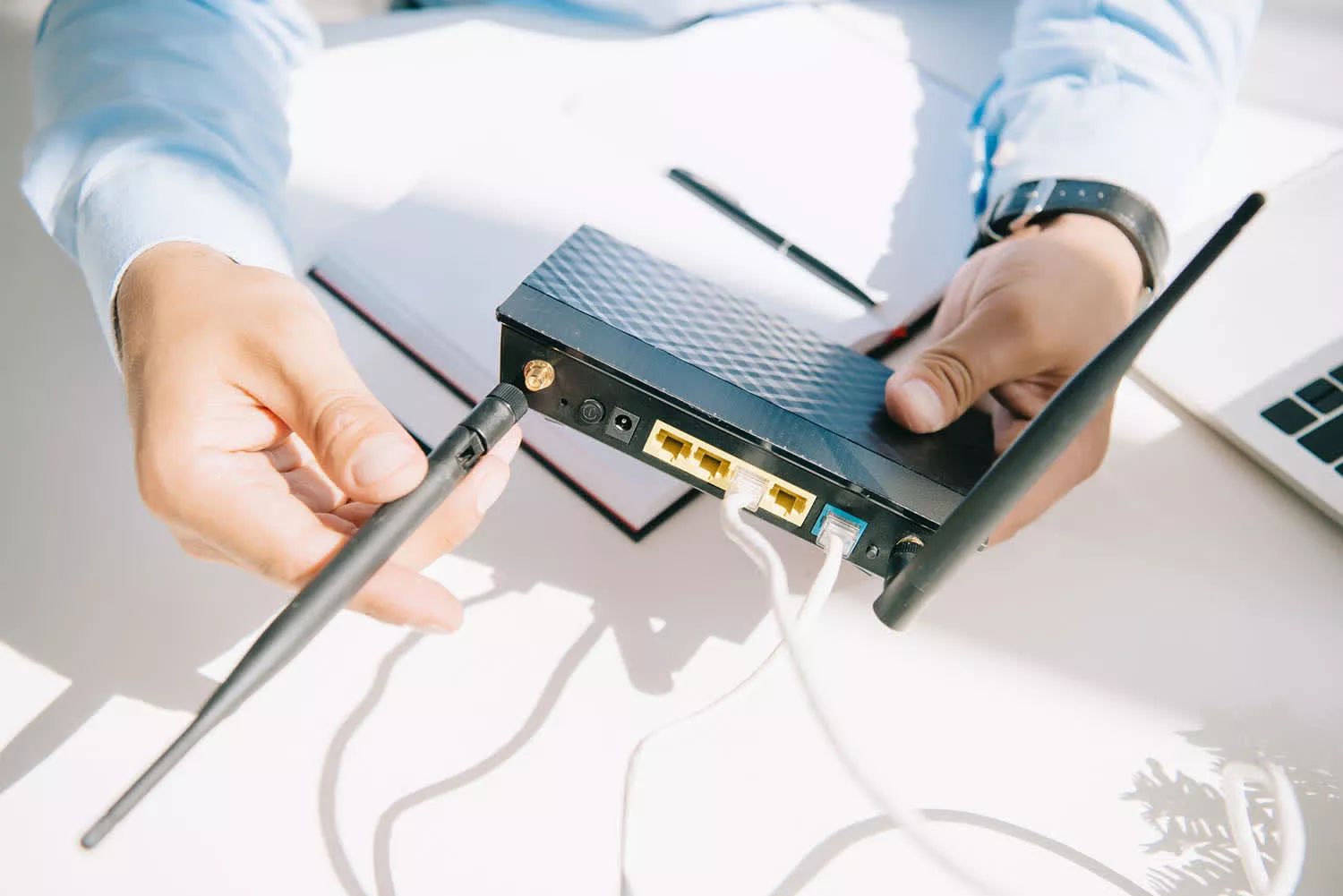Introduction
Welcome to the exciting world of online gaming! Whether you’re a casual gamer or a hardcore enthusiast, having a fast and stable internet connection is crucial for a smooth gaming experience. In this article, we will explore various strategies and tips to optimize your online gaming connection speed.
When it comes to online gaming, the speed and reliability of your internet connectivity can make a significant difference in your gameplay. Slow connection speeds, high latency, and lag can be frustrating and even ruin your gaming experience. Fortunately, there are several steps you can take to enhance your network setup and ensure a seamless gaming experience.
Before we dive into the specifics, it’s important to understand how your internet connection speed affects your online gaming performance. Internet speed is typically measured in terms of download and upload speeds. Download speed refers to the rate at which data is transferred from the internet to your device, while upload speed is the speed at which data is transferred from your device to the internet.
Low download or upload speeds can result in slow-loading game graphics, delayed reactions, and overall sluggish gameplay. Additionally, high latency, often referred to as “ping,” can cause a delay in data transmission between your device and the game server, resulting in a laggy gaming experience. By optimizing your network setup and utilizing some helpful tips, you can minimize these issues and enjoy smoother and more responsive gameplay.
In the following sections, we will discuss various techniques to improve your online gaming connection speed. We will cover topics such as optimizing your network, ensuring a stable Wi-Fi connection, selecting the right gaming router, managing bandwidth, reducing interference, updating network drivers and firmware, and utilizing VPN for better gaming performance.
So, whether you’re a competitive gamer looking to gain an edge or simply want to enhance your overall gaming experience, let’s dive in and discover how to increase your online gaming connection speed!
Understanding Your Internet Connection Speed
Before we delve into optimizing your online gaming connection speed, it’s essential to have a clear understanding of how your internet connection works and how it affects your gaming experience.
Internet connection speed is typically measured in megabits per second (Mbps) and can vary significantly depending on your internet service provider (ISP) and the type of connection you have. The two main factors that contribute to your connection speed are download speed and upload speed.
The download speed refers to how quickly data can be transferred from the internet to your device. This is particularly important for online gaming as it determines how fast you can receive data from the game server, such as game updates, graphics, and other players’ actions. A higher download speed will result in faster-loading times and a smoother gaming experience overall.
The upload speed, on the other hand, determines how quickly you can send data from your device to the game server. Though not as critical as download speed for gaming, having a decent upload speed is still essential for tasks like uploading game clips, participating in multiplayer games, or streaming your gameplay.
Another crucial factor to consider when it comes to online gaming is latency, often referred to as “ping.” Latency is the delay between the time your device sends a request to the game server and the server’s response. High latency can result in noticeable delays between your actions and their corresponding effects in the game, leading to a laggy and unresponsive gaming experience.
Latency can be affected by various factors, including the distance between your device and the game server, the quality of your internet connection, and the network congestion. It’s important to keep latency as low as possible to ensure smooth and responsive gameplay.
To measure your internet connection speed, you can use online tools or visit websites that offer speed tests. These tests will provide you with information about your current download speed, upload speed, and latency. If you find that your connection speed is below what you’re paying for or experiencing frequent latency issues, it may be time to explore ways to optimize your network setup.
In the next sections, we will discuss various strategies and tips to improve your online gaming connection speed and reduce latency. From optimizing your network for gaming to selecting the right gaming router, we will cover all aspects to help you achieve the best possible gaming experience.
Optimizing Your Network for Online Gaming
To ensure a smooth and lag-free gaming experience, it’s important to optimize your network setup specifically for online gaming. Here are some effective strategies to improve your network performance:
- Use a Wired Connection: While a Wi-Fi connection may be convenient, a wired Ethernet connection offers more stability and higher speeds. Whenever possible, connect your gaming device directly to the router using an Ethernet cable to minimize latency and reduce the chances of signal interference.
- Upgrade Your Internet Plan: If you’re experiencing consistently slow connection speeds or frequent lag during online gaming sessions, consider upgrading your internet plan. Look for plans with higher download and upload speeds to ensure smoother gameplay and faster data transfer.
- Check for Network Congestion: Congested networks can lead to slower connection speeds and increased latency. If you notice that your connection is slower during peak playing hours or when other devices are using the network heavily, consider scheduling your gaming sessions during off-peak times or implementing Quality of Service (QoS) settings to prioritize gaming traffic.
- Ensure Proper Router Placement: The physical placement of your router can significantly impact your network performance. Place it in a central location, away from obstructions and electronic devices that may interfere with the Wi-Fi signal. Consider elevating the router to ensure better coverage and minimize signal loss.
- Enable Quality of Service (QoS) Settings: Many modern routers offer QoS settings that allow you to prioritize gaming traffic over other devices and activities on your network. By allocating more bandwidth to your gaming device, you can reduce latency and ensure smoother gameplay.
- Use a Gaming VPN: Utilizing a virtual private network (VPN) specifically designed for gaming can improve your connection speed and reduce latency. VPNs can provide dedicated gaming servers, optimize your network route, and protect against DDoS attacks, enhancing your overall gaming experience.
- Close Background Applications: To free up network resources and reduce latency, close any unnecessary background applications on your gaming device. Applications running in the background can consume bandwidth and degrade network performance, resulting in a less optimal gaming experience.
By implementing these strategies, you can optimize your network for online gaming and ensure a smoother, more responsive gameplay experience. Remember, a stable and high-speed network connection is essential for enjoying online multiplayer games to their fullest potential.
Ensuring a Stable Wi-Fi Connection
For many gamers, a Wi-Fi connection is the preferred option for connecting their gaming devices to the internet. However, a stable and strong Wi-Fi connection is crucial to ensure optimal gaming performance. Here are some tips to help you achieve a stable Wi-Fi connection for online gaming:
- Position Your Router Properly: The placement of your Wi-Fi router plays a key role in signal strength and coverage. Ensure that the router is placed in a central location in your home, away from obstructions such as walls or large furniture. This will help minimize signal interference and ensure better coverage throughout your gaming area.
- Reduce Interference: Other devices operating on the same Wi-Fi frequency, such as cordless phones, baby monitors, or microwave ovens, can interfere with your Wi-Fi signal. Keep your gaming router away from such devices to minimize interference and maintain a stable connection.
- Update Router Firmware: Manufacturers often release firmware updates for their routers to enhance performance and address known issues. Regularly check for firmware updates for your gaming router and install them to ensure you’re using the latest version with optimal stability and functionality.
- Change Wi-Fi Channel: Wi-Fi routers operate on different channels to avoid interference from neighboring networks. If you experience consistent Wi-Fi signal issues, try changing the channel settings in your router’s admin panel. Experiment with different channels to find the one with the least interference.
- Use Wi-Fi Range Extenders: If your gaming area is located far from your router, or if there are areas with weak signal coverage, consider using Wi-Fi range extenders to boost the Wi-Fi signal. These devices help extend the range of your Wi-Fi network, ensuring better connectivity for your gaming devices.
- Secure Your Wi-Fi Network: To prevent unauthorized access and keep your Wi-Fi network secure, make sure to set up a strong password for your router. This will not only protect your network from potential security threats but also ensure that your bandwidth is not being consumed by unauthorized devices.
- Check for Wi-Fi Interference: Wi-Fi analyzers and signal strength apps can help identify areas of your home with poor Wi-Fi signal coverage or potential sources of interference. By identifying these issues, you can take steps to address them, such as repositioning your router or adjusting your network settings.
By following these tips, you can significantly improve the stability and strength of your Wi-Fi connection for online gaming. Remember, a stable connection is essential for minimizing latency, reducing lag, and ensuring a smooth gaming experience.
Selecting the Right Gaming Router
When it comes to optimizing your online gaming connection, one of the most crucial components is selecting the right gaming router. A high-quality gaming router can significantly improve your network performance and provide a more seamless gaming experience. Here are some factors to consider when choosing a gaming router:
- Speed and Performance: Look for a router that supports the latest Wi-Fi standards, such as Wi-Fi 6 (802.11ax), which offers faster speeds and improved performance. A router with high-speed capabilities will ensure faster data transfer and reduced latency during online gaming sessions.
- Quality of Service (QoS) Support: A gaming router with built-in Quality of Service (QoS) features allows you to prioritize gaming traffic over other devices and activities on your network. This ensures that your gaming device receives sufficient bandwidth and reduces the chances of lag or latency issues.
- Dual-Band or Tri-Band Connectivity: Consider a router that offers dual-band or tri-band connectivity. Dual-band routers operate on both the 2.4GHz and 5GHz frequency bands, providing better flexibility and potentially reducing interference. Tri-band routers offer an additional 5GHz band, which can be beneficial for households with multiple gaming devices or heavy network usage.
- MIMO Technology: Multiple-Input Multiple-Output (MIMO) technology is crucial for enhancing Wi-Fi performance in crowded environments. Look for a gaming router with MIMO technology, as it can provide better signal range, coverage, and overall network stability.
- Advanced Security Features: Online gaming often involves sharing sensitive personal information. Therefore, it’s important to choose a gaming router with advanced security features, such as built-in firewalls, encryption protocols, and guest network support, to safeguard your network and protect against potential threats.
- Expandability and Customization: Consider a router that offers customizable settings, such as the ability to flash custom firmware or adjust advanced network settings. This allows you to tailor the router’s performance to your specific gaming needs and potentially gain additional features or functionality.
- Reviews and Recommendations: Before making a final decision, it’s worthwhile to read reviews, check user ratings, and seek recommendations from trusted sources or fellow gamers. Pay attention to reviews that specifically focus on gaming performance to get a better understanding of how the router performs in real-world gaming situations.
While the selection of a gaming router involves many features and considerations, it’s important to choose one that aligns with your specific gaming requirements and budget. Keep in mind that a well-suited gaming router can significantly enhance your online gaming experience, providing you with a stable and reliable network connection.
Managing Bandwidth and Prioritizing Gaming Traffic
Bandwidth management and prioritizing gaming traffic are key strategies to ensure a smooth and uninterrupted online gaming experience. By optimizing your network settings and allocating sufficient bandwidth to gaming, you can reduce lag and latency issues. Here’s how to manage your bandwidth effectively:
- Enable Quality of Service (QoS) Settings: Most gaming routers offer QoS settings that allow you to prioritize gaming traffic over other devices and activities on your network. By allocating more bandwidth to your gaming device, you can reduce latency and ensure smoother gameplay. Configure the QoS settings in your router’s admin panel to prioritize gaming traffic.
- Limit Bandwidth Usage of Other Devices: If multiple devices are connected to the same network, their activities may consume significant bandwidth, impacting your gaming performance. Consider setting limits or scheduling bandwidth allotments for other devices to ensure that your gaming device receives the necessary bandwidth for a lag-free gaming experience.
- Manage Background Downloads and Updates: Automatic background downloads and updates (such as operating system updates or app downloads) can consume a significant portion of your network’s bandwidth. Schedule these activities during non-gaming hours or pause them while you’re playing to free up bandwidth for a smoother gaming experience.
- Optimize Game Settings for Bandwidth Usage: Some online games allow you to adjust their settings to use less bandwidth without compromising the gameplay experience. Tweaking options such as graphics quality, server selection, and in-game voice chat can help reduce the amount of data being transferred, resulting in lower latency and better overall performance.
- Monitor and Control Network Traffic: Utilize network monitoring tools or gaming routers that offer real-time bandwidth usage information. By monitoring your network traffic, you can identify applications or devices consuming excessive bandwidth and take necessary actions, such as limiting their usage or closing background applications that are not essential for gaming.
- Consider a Wired Connection for Gaming: While Wi-Fi is convenient, a wired connection can provide more stability and higher speeds. If possible, connect your gaming device directly to the router using an Ethernet cable. This eliminates potential Wi-Fi signal interference and ensures a dedicated and consistent connection for gaming.
Remember, effective bandwidth management and prioritizing gaming traffic are crucial for reducing latency and achieving a smoother online gaming experience. By implementing these strategies, you can optimize your network’s performance and enjoy lag-free gameplay.
Reducing Interference and Lag
Interference and lag can significantly impact your online gaming experience, causing delays, stuttering, and frustrating gameplay. Fortunately, there are several steps you can take to reduce interference and minimize lag for a smoother gaming session. Here’s how:
- Choose the Right Wi-Fi Channel: Wi-Fi routers operate on different channels to avoid interference from neighboring networks. Use a Wi-Fi analyzer or the router’s admin panel to identify the least congested channel and manually select it. This helps reduce interference from nearby Wi-Fi networks and improves your gaming performance.
- Minimize Physical Interference: Physical barriers and electronic devices near your gaming setup can interfere with your Wi-Fi signal and degrade connection quality. Keep your router away from walls, large furniture, and electronic devices such as cordless phones or microwaves that can cause signal interference.
- Upgrade to a Dual-Band Router: Dual-band routers offer both 2.4GHz and 5GHz frequency bands. The 5GHz band is less crowded and provides faster speeds and lower interference. Upgrade to a dual-band router to take advantage of the 5GHz band for improved gaming performance.
- Use Ethernet Instead of Wi-Fi: While Wi-Fi is convenient, a wired Ethernet connection offers more stability and lower latency. If possible, connect your gaming device directly to the router using an Ethernet cable to eliminate potential Wi-Fi interference and ensure a reliable and uninterrupted connection.
- Reduce Network Congestion: Network congestion can cause latency and lag in online gaming. Limit the number of devices connected to your network, especially during gaming sessions. Encourage other household members to refrain from bandwidth-intensive activities such as streaming or downloading large files while you’re gaming.
- Optimize Your Router’s Settings: Adjusting your router’s settings can help reduce lag. Enable features like Quality of Service (QoS) to prioritize gaming traffic, disable unnecessary services, and ensure that firmware is up to date. Consult your router’s documentation or manufacturer’s website for guidance on optimizing settings for gaming.
- Use an Ethernet Powerline Adapter: If running an Ethernet cable from your router to your gaming device is not feasible, consider using an Ethernet powerline adapter. This device allows you to extend your network connection using your existing electrical wiring, providing a stable and fast connection for gaming without the need for long cables or Wi-Fi.
By implementing these strategies to reduce interference and lag, you can significantly improve your online gaming experience. Remember, a stable and low-latency connection is crucial for quick response times and smooth gameplay.
Updating Network Drivers and Firmware
Regularly updating your network drivers and router firmware is essential for maintaining optimal performance and addressing any known issues or vulnerabilities. Outdated drivers and firmware can lead to compatibility issues, security vulnerabilities, and reduced network performance. Here’s why and how to update them:
Updating Network Drivers:
Network drivers act as the interface between your operating system and the network hardware. Outdated or incompatible network drivers can cause network connectivity issues, slow speeds, and increased latency. Here’s how to update them:
- Identify Your Network Adapter: Determine the manufacturer and model of your network adapter. You can find this information in the Device Manager (Windows) or System Information (macOS).
- Visit the Manufacturer’s Website: Go to the website of your network adapter manufacturer and look for the support or downloads section.
- Download the Latest Driver: Locate the appropriate driver for your network adapter model and download the latest version compatible with your operating system.
- Install the Updated Driver: Follow the installation instructions provided by the manufacturer to install the updated network driver on your system.
Updating Router Firmware:
Router firmware is the software that controls the operation and functionality of your router. Keeping your router’s firmware up to date ensures that you have the latest features, bug fixes, security enhancements, and performance optimizations. Here’s how to update your router’s firmware:
- Check Router Manufacturer’s Website: Visit the support or downloads section of your router manufacturer’s website.
- Identify Your Router Model: Locate the model number of your router. It is usually mentioned on the router itself or on the packaging.
- Download the Latest Firmware: Look for the latest firmware version available for your router model. Carefully download the firmware file, ensuring it matches your router’s exact model number to avoid compatibility issues.
- Access Router Admin Panel: Open a web browser and enter your router’s IP address to access the administrator panel. The IP address is usually mentioned on the bottom of your router or in the user manual.
- Upload and Install Firmware: In the router’s admin panel, navigate to the firmware upgrade section. Follow the provided instructions to upload and install the downloaded firmware file onto your router.
Regularly updating your network drivers and router firmware is essential for maintaining network stability, security, and performance. By keeping these components up to date, you can minimize compatibility issues, improve network functionality, and ensure a smooth online gaming experience.
Utilizing VPN for Better Gaming Performance
A virtual private network (VPN) can be a powerful tool for enhancing your gaming performance, especially when it comes to reducing latency, protecting your privacy, and accessing geo-restricted content. Here’s how you can utilize a VPN for better gaming:
Reducing Latency and Enhancing Stability:
One of the key benefits of using a VPN for gaming is the potential reduction in latency or ping. When you connect to a VPN server, it encrypts your internet traffic and routes it through a different server location. This can help you bypass congested or poorly optimized routes taken by your ISP, resulting in more direct and stable connections to game servers. By connecting to a VPN server closer to the game server or using a gaming-specific VPN service, you can potentially reduce lag and enjoy a smoother gaming experience.
Protecting Privacy and Security:
A VPN creates a secure encrypted tunnel between your device and the game server, protecting your online activities from prying eyes, such as hackers or your ISP. By using a VPN, you can ensure that your gaming traffic remains private and shielded from potential threats. This is particularly important if you’re using public Wi-Fi networks or competing in esports tournaments where cybersecurity is paramount.
Accessing Geo-Restricted Content:
Some online games and content may be region-restricted, preventing players from accessing them in certain countries. However, by connecting to a VPN server located in a different country, you can bypass these restrictions and access geo-blocked games or game servers. This allows you to play with friends from different regions, join international gaming communities, and overcome any regional limitations.
Choosing a VPN for Gaming:
When selecting a VPN for gaming, consider the following factors:
- Server Network: Choose a VPN provider with a large server network, including servers located near popular game servers or esports events.
- Speed and Stability: Ensure that the VPN service provides fast and stable connections to minimize any potential impact on your gaming performance.
- Gaming-specific VPN Services: Some VPN services offer optimized servers and features specifically designed for gaming, such as dedicated gaming routes or lower latency connections.
- Security and Privacy: Look for VPN providers that prioritize strong encryption, a strict no-logs policy, and advanced security features to protect your gaming sessions.
By utilizing a VPN for gaming, you can potentially reduce latency, enhance security, and unlock new gaming opportunities. However, it’s important to choose a reliable VPN provider and connect to servers that offer the best performance for your gaming needs. Experiment with different server locations and configurations to find the optimal setup that provides the best gaming experience for you.
Conclusion
Optimizing your online gaming connection speed is crucial for a smooth and enjoyable gaming experience. By understanding your internet connection speed, optimizing your network setup, ensuring a stable Wi-Fi connection, selecting the right gaming router, managing bandwidth, reducing interference and lag, updating network drivers and firmware, and utilizing a VPN for better gaming performance, you can enhance your gaming experience and achieve lower latency, reduced lag, and smoother gameplay.
Remember, consistently monitoring and maintaining your network setup is essential. Regularly check for firmware updates and driver upgrades, especially for your gaming router and network devices. Additionally, consider implementing quality of service (QoS) settings to prioritize gaming traffic over other devices and activities on your network.
Ensuring a stable and fast internet connection is not only about technical adjustments but also about managing bandwidth and reducing interference. By making smart choices like connecting your gaming device through an Ethernet cable, minimizing background downloads or updates, and using a wired connection or a dual-band router, you can enjoy uninterrupted gaming sessions with minimal latency.
Furthermore, utilizing a virtual private network (VPN) can provide additional benefits, such as reducing latency, protecting your privacy and security, and accessing geo-restricted content. Choose a VPN service with a large server network, fast speeds, and robust security features to enhance your gaming experience.
In conclusion, optimizing your online gaming connection speed requires a combination of technical adjustments, network optimization, and utilizing appropriate tools and services. By following the strategies and tips outlined in this article, you can significantly improve your network performance, reduce latency, and enjoy a seamless and responsive gaming experience.

























